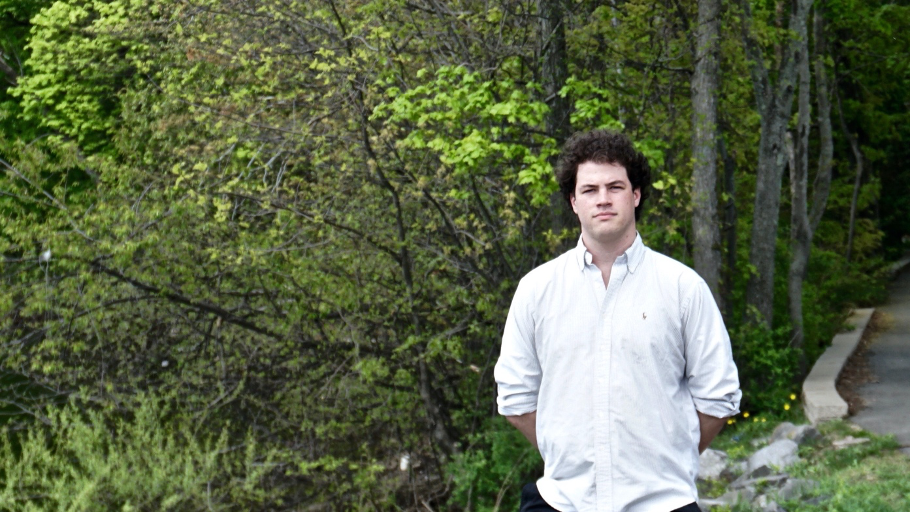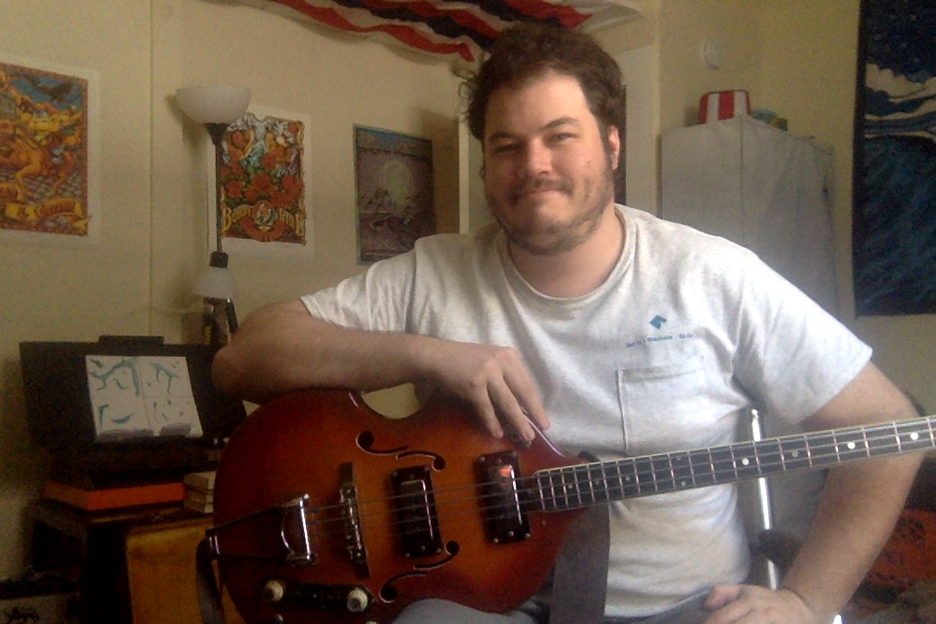"Many issues that students noticed in the beginning -- lack of motivation, technology gaps, more responsibility at home, and mourning a lost semester -- have transformed from minor inconveniences to substantial barriers."
May 8, 2020
As time continues to flow along its endless river, so do the challenges and barriers faced by our incredible students. I was thinking about this analogy while out for one of my designated "one walk per day." What I noticed as my hiking path led me downstream was that the river was widening, picking up speed, and becoming much more turbulent. In the intervening time from our lasts posts (shout out to all the other writers, y'all rock!!), the pandemic situation has changed very little. Yet, the challenges faced by our students have compounded immensely.
The complexity and significance of challenges faced by our students continue to grow as time goes on. Many issues that students noticed in the beginning -- lack of motivation, technology gaps, more responsibility at home, and mourning a lost semester -- have transformed from minor inconveniences to substantial barriers. None of the students I work with signed up for online courses. None of them asked to be moved home with 24-hour notice. Each and every student I talk with has taken it in stride, understanding that they are doing what is best for the public health of their communities. Many of the students I work with are feeling a sense of failure that the minor inconveniences of two months ago are now substantial enough to be impacting their final exams.
The exponential growth of these challenges is not occurring in isolation either. As time has worn on, the river of challenges has begun to widen immensely. As I mentioned in my previous post, our students carry so much on their shoulders that go beyond academics. The weight of everything outside of school is beginning to grow. Grocery store trips have turned into food bank trips, concern about extended family being able to pay rent has turned into figuring out how that extended family can move in, interest in volunteering and internships has turned into an absolute need to find any available work. The compounding barriers outside of academics have only grown and become more challenging for our students and their families. Two things, though, have stood out to me as guiding resources for navigating these conversations with students: mindfulness and community.
One of the things that I believe separates Bottom Line from other organizations is the holistic nature of our curriculum. While we, of course, help students as they navigate their degrees, employment, and affordability, we also focus on the life experiences of our students. One of the greatest tools from the life section of our curriculum is mindfulness. With so many of our students being challenged by so much, it's pushed our students' ability to prioritize and recognize what is in their control. Mindfulness was born from meditation, a practice many of my students have begun to follow, and encourages one to recognize the experience of their present moment without preconception. There are many ways to practice mindfulness, but by attempting to be "in the moment," students can recognize what they are feeling in that moment. Feelings of mournfulness, sadness, anxiety, being overwhelmed, and being scared are frequently expressed. Once students have identified what they're feeling, they can begin to recognize what's causing those feelings. Students quickly realize the very things that are out of their control are causing their negative emotional experience. This helps them begin to 'let go' or deprioritize those challenges. Other students recognize that what is affecting them is also affecting others and can work to connect and find solidarity with those peers sharing the same experience.
As I've encouraged my students, I encourage you to research mindfulness techniques and find what works for you; my students often cite these practices as the very things that continue to keep them grounded and focused.
Beyond mindfulness, one of the most important resources and support systems that my students have been utilizing is their communities. Many of my students and I live in Worcester, about an hour outside of Boston. While I am not surprised, I am continually blown away by the community efforts being made here in Worcester.
Many of my students living with at-risk family members have neighbors delivering their groceries. Others are finding employment through the networks they've built. And community-aid spreadsheets (where people list what they need or can provide) are popping up everywhere. In such a desperate and uncertain time, our students need to be able to lean on their community and seek their resources and support. Beyond physical communities, I've been blown away by how our students have been able to maintain their social and academic communities. From texting to Zoom dinners, and even playing online games, I've found our students have done an incredible job maintaining a community that was spread across the country and world, with no warning.
As of writing this post, I just finished a conversation with a student who's secured a position with a global software engineering firm. Talking to them and hearing their excitement now, but remembering their dejected tone nearly two weeks ago, has reminded me: all rivers, no matter their challenges, will always lead to an ocean of possibility.
"There is only one way to eat an elephant: one bite at a time." – Desmond Tutu
"Look for the helpers." – Mr. Rogers
 While I've always considered myself an empathetic person, building relationships with my students has helped me grow more than I could have ever imagined.
While I've always considered myself an empathetic person, building relationships with my students has helped me grow more than I could have ever imagined.
April 17, 2020
My name is Sam, and I am proud to say that I work for the Massachusetts region of Bottom Line. I've served in the role of Success advisor for ten months following my graduation from Clark University with a Bachelor and Masters in International Development and Social Change.
On a typical day, my job primarily consists of meeting with our amazing students at their colleges to discuss their success on campus. I aim for my student meetings to feel like a continuation from our previous meeting. Often there is already a service plan in place, work students have done between meetings, and a plan moving forward. Having such a strong and robust Bottom Line curriculum goes a long way to structuring individual student meetings as well as providing an overarching path for students to follow across their four years and potentially hundreds of meetings. While ideally, our student meetings follow a predetermined plan, many meetings rapidly shift to putting out fires that come up for students. While we might have planned for a mock interview, if registration is less than a week away and a student has been unable to contact their advisor to get their registration PIN, that issue will always take precedent. Of course, this type of problem-solving takes a lot of agility, but it's one of my favorite aspects of our work.
As students have transitioned to remote learning environments, I've found the most significant change has come in what our student's needs are. Before the pandemic, during only a handful of my meetings each week we would need to throw out the playbook to solve a more acute issue, where now nearly every meeting has some element of critical need. It's been long enough now for most students that we are getting back to following our curriculum, doing activities, etc. But still, nearly every meeting begins with an immediate and acute need brought on by the pandemic. From internet outages to lost work and infected family, and even simple self-care the critical needs felt by our students during these uncertain times are as varied as they are significant. It often feels like for every question we find an answer to, three more problems arise. Increasingly, many of our students' needs are falling outside of the Bottom Line purview; we simply aren't experts in healthcare or filing unemployment, for example. While it's always been the case, I've found it especially important during these times to  rely on the relationships I've built with my students and the unwavering empathy I aim to bring to every meeting and conversation.
rely on the relationships I've built with my students and the unwavering empathy I aim to bring to every meeting and conversation.
What empathy is and how to share it is massively reimagined during these socially distant times. I don't believe it can be understated how vital being physically present in a shared space is for expressing empathy and relationship building. Reading non-verbal cues, making eye contact, and even being able just to get up to go for a walk when a student gets jittery were all incredibly important aspects of my meetings, which I've now lost. By meeting on campus, often in cafeterias or common areas, our conversations often feel collaborative and that we are solving a problem together. Now, conversations feel stiff and sometimes unnatural. Technological limitations often hamper my ability to show empathy and force me to tell students my understanding increasingly.
One of the best parts of this job is working with students from all walks of life. While I've always considered myself an empathetic person, building relationships with my students has helped me grow more than I could have ever imagined. I have learned so much about my students and their experiences. I've learned how to empathize with a student whose life experience I could never imagine otherwise. What this pandemic has laid bare is something I've always felt that I knew: what my students choose to share with me is only a sliver of what makes up their life experience. Now, housing and food insecurity, lack of internet and computers, financial hardships, the mental toll this pandemic is taking, and much more are dominating our students' lives, and the impact it has on their academic success is simply unavoidable. Before these factors contextualized the problems our students face, now they lay at the heart of the barriers our students are facing.
